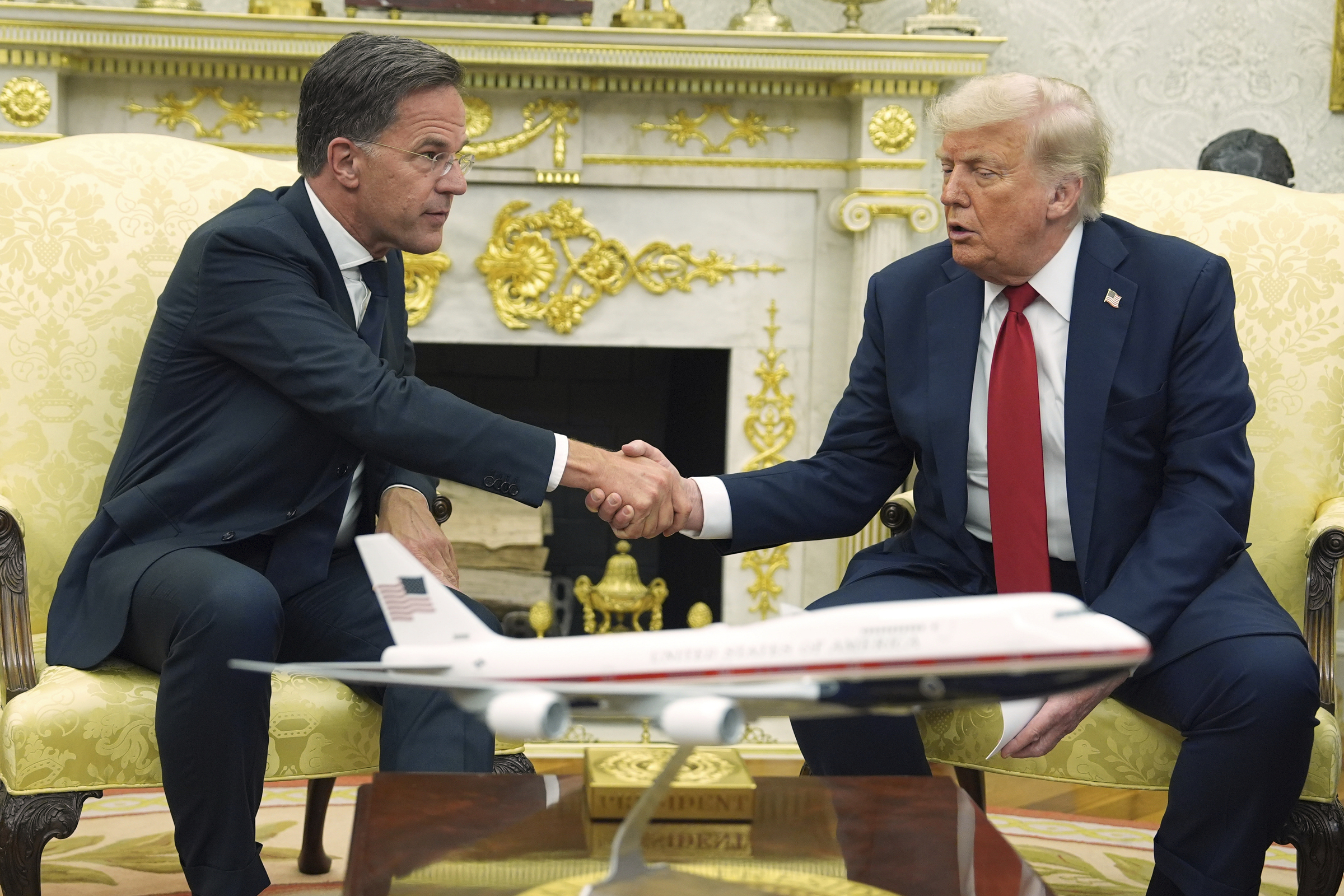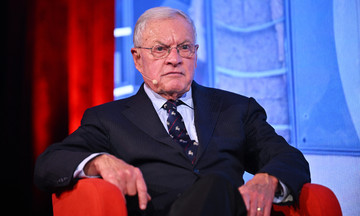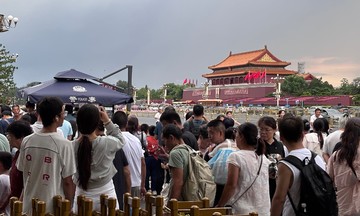President Donald Trump announced on 14/7 he would impose "very severe" tariffs, approximately 100%, on Russia if it doesn't reach a ceasefire agreement with Ukraine within 50 days.
He said he would also impose "secondary tariffs" targeting Russia's trading partners, thereby weakening Moscow's ability to withstand stringent Western sanctions.
 |
US President Donald Trump at the White House on 14/7. Photo: AP |
US President Donald Trump at the White House on 14/7. Photo: AP
The president also mentioned plans to supply Ukraine with weapons, with European allies purchasing "billions and billions" of USD worth of military equipment from the US to transfer to Ukraine. This aid aims to help Kyiv resist increasing pressure from Moscow on the battlefield.
Prominent among the promised US weaponry is the Patriot air defense system, a top priority for Ukraine to neutralize Russian UAVs and missiles.
President Trump's declaration immediately sparked hope in Kyiv. In a speech the same day, Ukrainian President Volodymyr Zelensky expressed gratitude to Trump for his "willingness to protect the lives of our people".
Some view this shift in stance as evidence that Kyiv's efforts to improve relations with Washington, following a heated exchange between the two leaders at the Oval Office earlier this year, have paid off.
According to analyst Dan Sabbagh from the Guardian, Trump's latest pronouncements represent a notable change. When he began his second term, President Trump believed he could reach an agreement with Russia to end the conflict in Ukraine. However, as he clarified in recent statements, conversations with Russian leadership gradually led him to conclude that Moscow isn't serious about a peace agreement.
The president said he thought he had reached an agreement with Russia on four occasions, but Moscow's subsequent attacks on Kyiv and other major Ukrainian cities forced him to reconsider.
In another positive sign for Ukraine, during a meeting at the Oval Office, President Trump and NATO Secretary General Mark Rutte praised Kyiv for repelling Moscow's relentless attacks despite dwindling resources.
Early in his presidency, Trump blamed Ukraine for starting the conflict, accusing President Zelensky of wanting to prolong it. But on 14/7, he spoke of Ukraine "fighting with extraordinary courage".
The president hailed the new arms supply plan as evidence of his success in getting NATO to increase military spending and encouraging Europe to play a larger role in resolving the conflict.
He expressed pleasure that Europe's role has been "revived." "I must tell you, Europe is very determined in this conflict," Trump told Rutte. "When I first got involved, I didn't think so, but now they are."
However, doubts linger whether the new aid package, coupled with Trump's threat to sanction the Russian economy, is enough to halt Moscow's campaign. A former Ukrainian military officer suggested it's unlikely to significantly impress the Kremlin or serve as a strong deterrent.
Jennifer Kavanagh, a senior fellow at Defense Priorities, an advocacy group supporting US military restraint abroad, believes Moscow has repeatedly rejected peace offers from Washington because it "doesn't want to stop fighting yet".
President Putin "believes Russia has the upper hand on the battlefield and that the US or Europe can't do much to exert pressure or inflict significant losses," she said. "Further aid to Ukraine is unlikely to significantly alter the military balance, and Russia is prepared to withstand additional sanctions."
Kavanagh believes the US strategy of arming Ukraine is "unsustainable." She argues that weapon stockpiles in Europe and the US have dwindled, making it difficult to provide more aid to Ukraine in the near future. Europe, with a much smaller defense industry than the US, could order new weapons, but delivery would take months, even years.
Furthermore, the feasibility of Trump's economic sanction threats remains unclear.
While he declared his readiness to impose 100% tariffs on Russia, this move is believed to have a limited impact on the Russian economy.
According to the Office of the US Trade Representative, in 2024, the US only imported about USD 3 billion worth of goods from Russia, mainly fertilizers, iron, steel, and uranium for nuclear reactors. It's unclear whether Trump intends to restrict these items.
Conversely, the US only exported USD 500 million worth of goods to Russia.
Trump's threat to impose "secondary tariffs" on any country trading with Russia could have a greater impact, especially on Moscow's energy sector. The Russian economy has weathered harsh sanctions largely due to continued oil and gas exports to countries outside the Western-led sanctions regime.
China and India are Russia's largest energy importers, taking advantage of the low prices Russia offered after losing Western customers due to the conflict. Both countries have poured tens of billions of USD annually into Russia's coffers.
Before 2022, Russian oil accounted for only 1% of India's oil imports; now it's nearly 40%. Meanwhile, Moscow is a major trading partner of Beijing, and before 2022, Russian oil accounted for over 15% of China's total oil imports.
Edward Fishman, a former US State Department official and expert on Russian sanctions, noted that Trump previously withdrew a threat to impose tariffs of over 125% on Chinese exports.
"So, if the goal is to reduce Russia's energy exports, it won't be effective," Fishman wrote on social media.
 |
President Trump meets NATO Secretary General Mark Rutte at the Oval Office, White House, on 14/7. Photo: AP |
President Trump meets NATO Secretary General Mark Rutte at the Oval Office, White House, on 14/7. Photo: AP
Moreover, many close US allies, including Japan and members of the EU, also have significant trade with Russia.
"It's a welcome change in tone," commented Democratic Senator Jeanne Shaheen, referring to President Trump. "But whether it will last remains to be seen."
According to CNN analyst Nick Paton Walsh, the 50-day deadline gives President Putin until September to persuade his American counterpart to change his mind or continue pushing the summer campaign to gain further advantages at the negotiating table.
"The president set a deadline perhaps to pressure Russia into an agreement. But we've seen this before, and Moscow has let the time pass without any noticeable action," Walsh said.
Vu Hoang (According to CNN, Guardian, AFP, Reuters)












